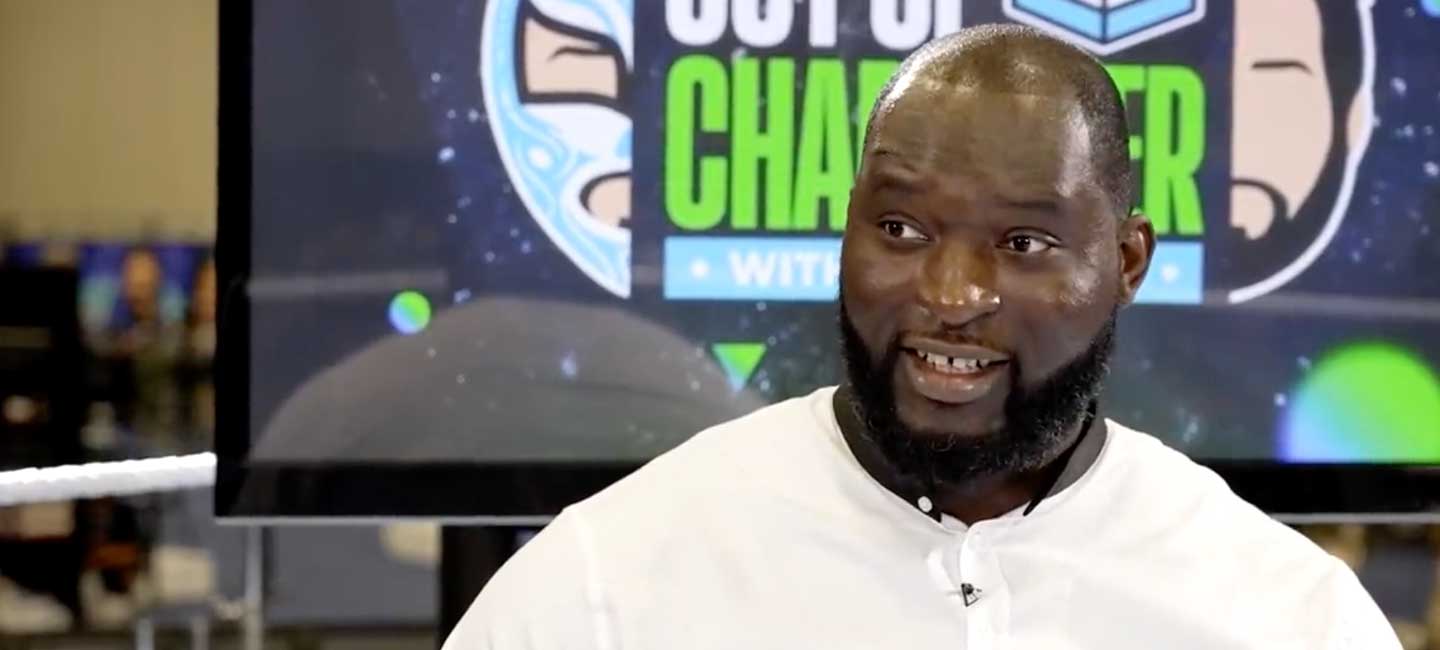WWE Superstar Omos Shares Details on Brain Tumor and Rare Disease
At 7 feet 3 inches tall, Jordan Omogbehin is hard to miss. These days you may recognize him from his on-screen persona as WWE superstar Omos. If you go back a decade, you may remember him as a member of the University of South Florida men’s basketball team.
It was during his time playing for the Bulls that a university official noticed something other than Omogbehin’s towering height.
“My [college] coach said to me, ‘I don’t know who this guy is, but it seems like he’s a very high up guy on the campus. I want you to look at his email,’ ” Omogbehin said in a recent interview on “Out of Character” with Ryan Satin. “So I read it and he just stated that, ‘Hey, I noticed that one of your guys, I think he has a tumor by the side of his face. He has a pituitary tumor and needs to get checked out ASAP.’ ”
.@TheGiantOmos on moving to the U.S. at the age of 15 to pursue a basketball career. 🏀
— WWE on FOX (@WWEonFOX) April 26, 2022
Latest Episode of #OutOfCharacter w/ @RyanSatin is AVAILABLE NOW ➡️ https://t.co/B5qLdSo3nG pic.twitter.com/djwiR1zpoE
According to Dr. Andre Beer Furlan, a pituitary and skull base neurosurgeon with the Neuro-Oncology Program at Moffitt Cancer Center, pituitary tumors are one of the most common types of benign tumors that grow at the base of the skull. The pituitary gland is the master gland on the body controlling function of other glands. Pituitary tumors are called nonfunctioning adenomas when they do not produce any hormone or functioning adenomas when tumor cells cause excessive hormone secretion.

Dr. Andre Beer Furlan, Neuro-Oncology Program
“Although it’s not considered cancer, pituitary tumors have serious consequences to body function beyond appearance,” said Beer Furlan. “There are two main concerns. When these tumors grow, they push on the optic nerves, which can cause vision problems. They can also push on the gland itself, which can impair normal pituitary hormone production. In addition, there are a wide variety of symptoms that may be related to functioning adenomas depending on the specific hormone secreted in excess.”
Omogbehin was sent for an MRI, which confirmed the tumor suspicions.
“I walked into the coach’s office and there was the president of the university and all the doctors from the office were there,” said Omogbehin. “They said, ‘So this is an MRI right here of your brain. Do you see that little speck right there? You have a brain tumor.’ ”
Omogbehin underwent surgery to remove the tumor through his nose. During the procedure, doctors discovered he also had acromegaly, which can lead to increased height, and a form of Cushing’s disease. André René Roussimoff, better known as Andre the Giant, is another WWE superstar who was known to have acromegaly. He was 7 foot 4.
“Acromegaly occurs when you have a pituitary adenoma that produces excessive growth hormone,” said Beer Furlan. “In patients you can see the visible effects like large nose, jaw, hands and feet. Those are just the visible symptoms. Patients can also have carpal tunnel syndrome, obstructive sleep apnea, high blood pressure and difficulty managing diabetes. It can also lead to growth of the heart, which can be life threatening.”
Omogbehin went on to say he still takes testosterone and other medication to help manage his condition today.
“Because of that tumor a lot of diseases affected me, my thyroid,” said Omogbehin. “It taught me a lesson that I can’t control everything. That it was completely out of my hands. There is nothing I could do. And it kind of got me down for a while. But I got used to living with it.”



